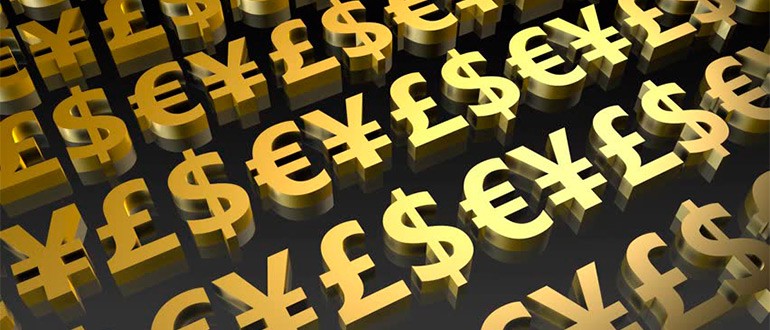Those of you who trade probably know that apart from the majors, i.e. major currency pairs, where the most common currencies are paired with the US dollar, there are also crosses (cross currency pair, cross rate), which do not involve the American currency. When analyzing majors, the emphasis is always on USD, while the second currency, be it the EUR, JPY or CHF, is hardly taken into account.
A cross rate is an exchange rate between two currencies that is derived from each currency’s relationship with a third currency. The most popular crosses involve the EUR, for example, EUR/AUD or EUR/CHF. Crosses with the euro are characterized by increased liquidity. Often, the EUR/CHF liquidity exceeds the liquidity of the USD/CHF pair (thanks to investors who want to buy the franc).
The Japanese Yen is the second most popular currency used in currency crosses. These include such instruments as NZD/JPY and GBP/JPY. These cross currency pairs are traded by those who prefer carry trade strategy.
A carry trade is a strategy where a trader sells low-yielding currency, for example, the Japanese Yen, and then buys a high-yielding currency. Using this strategy, the investor attempts to capture the difference between the rates, and profit from it. A number of other currencies, such as CAD, NZD and GBP are also often used in carry-trade transactions since the countries these currencies belong to have interest rates that are very high.
Analyzing majors and crosses
When we trade major currency pairs, we may find ourselves in a situation when both the dollar and the second currency are equally strong. At these moments, a trader can only guess where the pair my go. For example, when equally strong indicators come out both in the United States and the Eurozone, it can be quite challenging to decide whether to buy or sell a trading instrument.
With cross currency pairs this decision is a little easier, as they often involve opposing economies, so the situation where economic indicators coincide is very rare. For example, a scenario where the yen falls under pressure amid increasing tensions in relations with China would be a signal to buy EUR/JPY.
Main Currency Cross Pairs
- EUR/CHF. For Switzerland, the European Union is the main trading partner. CHF has a low rate, therefore this currency is often used in carry trades. In 2011, the pair’s exchange rate was pegged to the euro at 1.2000. The asset cannot fall below this mark because it’s controlled by the Swiss National Bank.
- EUR/JPY. This pair is popular due to its correlation with two major pairs: USD/JPY and EUR/USD. Investors often use it for speculation, taking advantage of different levels of interest rates and differences in the economies of Japan and the EU.
- NZD/JPY. This cross is used by the traders who prefer carry trade, since of all developed economies this pair has the highest interest rate spread. Traders prefer long positions (purchases) in NZD/JPY, especially when there are prerequisites (fundamental and technical) for its upward movement.Плюсы и минусы кросс-пар
Pros and cons of Cross currency pairs
Cross currency pairs are a very specific instrument. To trade them you need to understand the complex nuances of the economic and political situation in the countries involved. Another drawback is the high spread, which makes it unprofitable to trade using scalping strategies. This asset is not very much suitable for day trading either. But all these cons are much more than compensated by the high volatility of these instruments, which, with a skillful approach, guarantees a stable income







